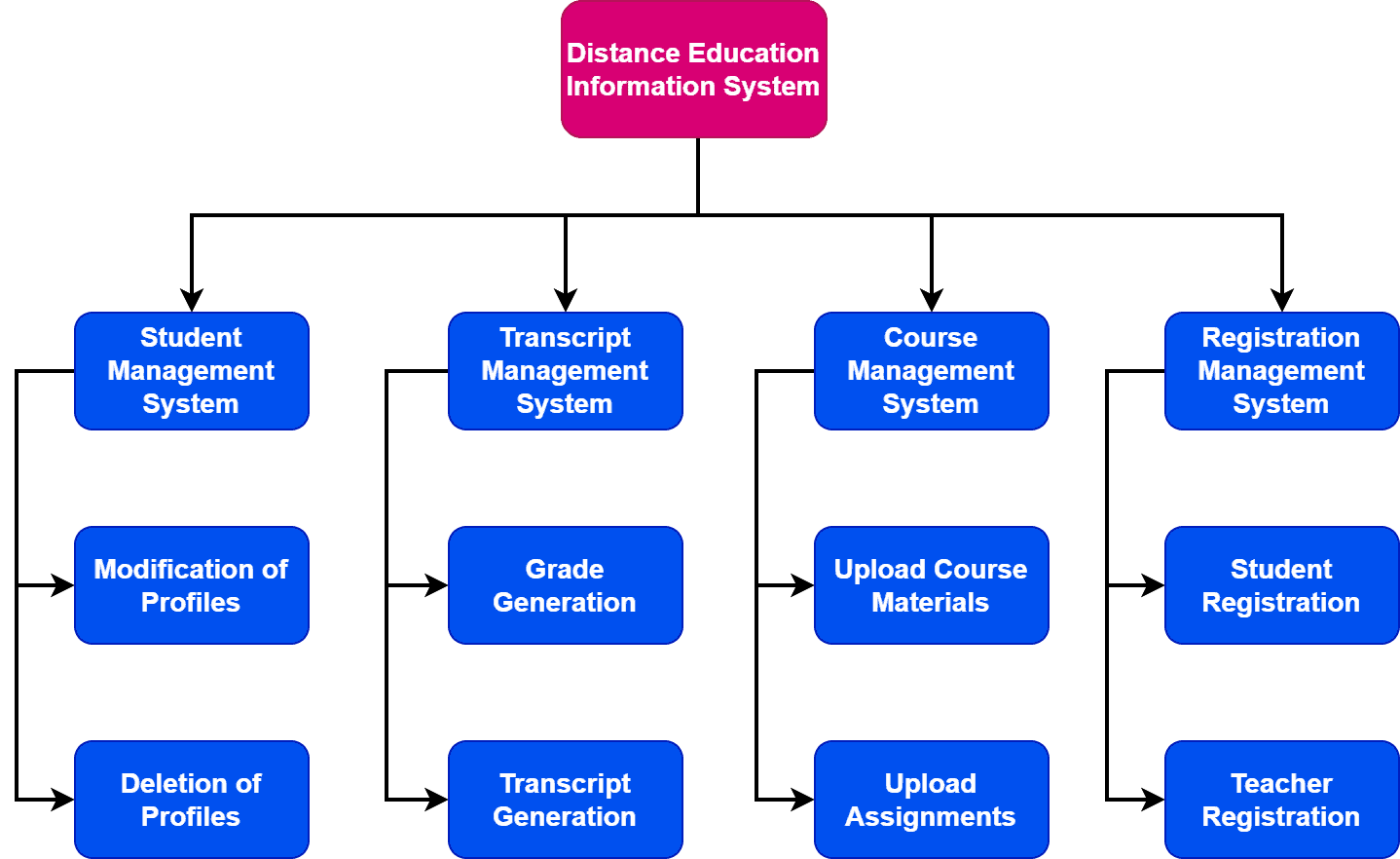1. 概述
在本篇文章中,我们将结合一个实际案例深入讲解函数分解法(Functional Decomposition)。同时,我们会分析这种方法的优势与局限性。
通过这篇文章,你将掌握如何利用函数分解来简化复杂系统的建模与设计,并理解它在软件工程、系统工程、业务流程优化等多个领域中的实际应用。
2. 什么是函数分解法
函数分解法是一种系统设计与分析方法,其核心思想是将一个复杂的系统按照功能模块拆解为更小、更易管理的组件。每个组件负责完成特定的功能,同时明确它们之间的交互关系。
这种方法的目标是将复杂的系统结构化、模块化,使其更容易理解、设计和实现。函数分解不仅适用于软件系统的设计,也广泛应用于机器人控制、业务流程再造等多个领域。
举个例子:
- 在软件工程中,我们可以通过函数分解识别出系统中需要开发的各个功能模块。
- 在系统工程中,常用于需求分析与架构设计。
- 在业务流程优化中,通过拆解流程中的关键步骤,找出瓶颈与优化点。
- 在机器人系统中,可用于拆解传感器、执行器、控制系统等模块。
函数分解是一种通用且强大的系统建模技术,能够显著提升系统设计的效率与清晰度。
3. 函数分解的基本步骤
函数分解通常遵循五个关键步骤,帮助我们系统性地拆解复杂问题:
识别系统的主要功能
明确整个系统的核心目标和主要职责。将主功能拆分为子功能
将每个主功能进一步细化为多个子功能,每个子功能负责完成一个具体任务。定义子功能之间的关系
明确各子功能之间如何协作、数据如何流动、调用顺序等。用图形化方式展示结构
通常使用功能模块图(Functional Block Diagram)来可视化展示各个子功能及其关系。细化并优化分解结果
回顾整个分解结构,检查是否准确反映系统逻辑,必要时进行调整。
下图展示了函数分解的基本流程结构:

4. 实际案例:在线教育系统
我们来看一个实际例子:一个在线教育信息管理系统,学生可以通过系统进行课程注册、成绩查询等操作。
使用函数分解法,我们可以将这个系统划分为以下四个主要模块:
- 学生管理
- 成绩管理
- 课程管理
- 注册管理
每个模块再进一步细分,例如学生管理模块可以拆分为:
- 学生信息修改
- 学生账户删除(由管理员操作)
如下图所示:

通过这种方式,原本复杂的系统被拆解为多个职责清晰、结构明确的子系统,便于开发、测试与后续维护。
✅ 踩坑提醒:不要过度拆解功能模块,否则会导致系统结构臃肿,反而增加维护成本。
5. 函数分解法的优势
函数分解法之所以被广泛采用,是因为它具备以下几个显著优点:
✅ 简化复杂系统
将庞大的系统拆分成多个小模块,提升可理解性与可实现性。✅ 促进团队协作
每个模块职责清晰,有助于不同团队或开发人员并行开发,提升效率。✅ 提高组件复用性
模块化设计使得部分功能组件可以在其他项目中复用,节省开发时间。✅ 增强沟通效率
清晰的结构图有助于与产品经理、测试人员、架构师等多方沟通,减少理解偏差。✅ 便于维护与扩展
模块之间耦合度低,修改或扩展某一部分不会影响整体系统。
6. 函数分解法的局限性
尽管函数分解法有诸多优点,但也存在一些潜在的局限,使用时需注意以下几点:
❌ 耗时且需要经验
分解过程需要深入理解系统逻辑,耗时较长,对设计者的领域知识要求较高。❌ 灵活性不足
一旦完成分解,系统结构相对固定,若需求频繁变更,可能需要重新设计。❌ 有过度简化风险
如果拆解不恰当,可能导致模块划分不合理,忽略系统整体的复杂性。❌ 忽视模块间交互
过度关注模块内部功能,可能忽略模块之间的依赖与交互,导致集成困难。❌ 依赖设计者的专业能力
函数分解的结果质量高度依赖设计者对业务的理解深度和建模能力。
⚠️ 建议:对于快速迭代或高度动态的系统,函数分解法应与其他设计方法(如面向对象设计、事件驱动架构)结合使用,以获得更好的灵活性。
7. 总结
本文介绍了函数分解法的基本概念、实施步骤、实际应用案例以及其优缺点。
函数分解法作为一种结构化设计方法,在系统建模、软件架构设计、业务流程优化等方面具有广泛的应用价值。但同时也存在一定的局限性,特别是在灵活性和模块交互方面。
✅ 适合场景:系统边界清晰、功能模块明确、变更频率较低的项目。
❌ 不适合场景:需求频繁变更、系统高度动态、模块间依赖复杂的项目。
在实际开发中,我们可以结合其他设计方法,灵活运用函数分解法,从而实现更高效、清晰的系统设计。